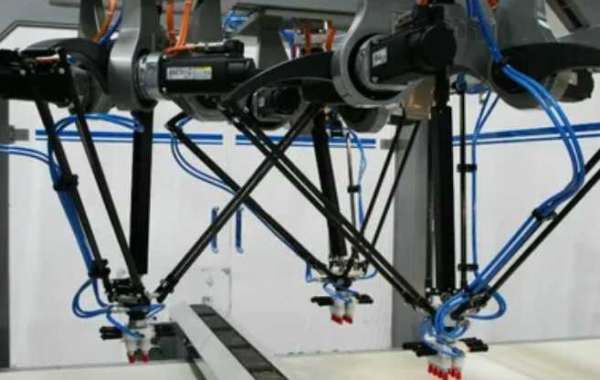Parallel Delta Robots: Precision and Speed Redefined in Automation
In the realm of robotics and automation, Parallel Delta Robots have emerged as formidable players, revolutionizing the way tasks are performed in various industries. With their striking design and unmatched precision, these robots are making significant strides in manufacturing, packaging, medical procedures, and beyond. This article delves into the world of Parallel Delta Robots, uncovering their design, working principles, applications, advantages, and the promising future they hold.
The Anatomy of Parallel Delta Robots
Parallel Delta Robots, often referred to as Delta Robots, are a category of parallel robots celebrated for their unique architecture and exceptional accuracy. Conceived by Reymond Clavel in the 1980s, the Delta Robot consists of three arms, or prismatic joints, interconnected to a central base. These arms are linked to an end effector, which can maneuver seamlessly in all three dimensions with remarkable speed and precision.
Key Components and Operation
- Base: The robot's base functions as a stable platform to which the three arms are attached. In most cases, the base remains stationary while the arms execute precise movements.
- Arms: The three arms extend from the base in a parallel configuration and are linked to the end effector. These arms are powered by high-precision motors and are responsible for executing the robot's precise maneuvers.
- End Effector: The end effector serves as the tool or device attached to the end of the robot's arms. It is tasked with executing specific operations such as picking up and placing objects, welding, or conducting surgical procedures.
- Actuators: High-performance actuators, including motors and gears, provide the required power and control for the robot's movements. These actuators enable rapid and precise positioning of the end effector.
Applications Across Industries
Parallel Delta Robots have found versatile applications in an array of industries:
- Manufacturing: Industries such as automotive and electronics benefit from Delta Robots for activities like pick-and-place tasks, assembly, and quality control due to their remarkable speed and precision.
- Packaging: Delta Robots shine in packaging applications, efficiently handling products of diverse sizes and shapes, including filling containers, sealing, and labeling products at impressive speeds.
- Food and Beverage: In the food sector, Delta Robots are employed for tasks like sorting, packaging, and palletizing, ensuring consistent and hygienic product handling.
- Pharmaceuticals and Medical: Delta Robots contribute to precise drug dispensing, surgical procedures, and laboratory automation, emphasizing precision and sterility.
- 3D Printing: Parallel Delta Robots have ventured into 3D printing, facilitating intricate and swift additive manufacturing processes.
Advantages of Parallel Delta Robots
- Speed and Precision: Delta Robots are renowned for their exceptional speed and accuracy, making them ideal for applications requiring high throughput and precision.
- Flexibility: Their adaptability to manage a wide range of payloads and perform diverse tasks positions them as versatile solutions for various industries.
- Compact Design: The compact and lightweight design of Delta Robots enables seamless integration into existing production lines or confined workspaces.
- Reduced Downtime: Delta Robots are known for their reliability, contributing to minimized downtime and heightened production efficiency.
- Safety: With appropriate programming and safety features, Delta Robots can work collaboratively with human operators, bolstering overall workplace safety.
A Promising Future
As technology continually evolves, Parallel Delta Robots are poised to play an even more substantial role in automation. Advancements in machine learning, artificial intelligence, and vision systems are anticipated to enhance their capabilities, enabling them to adapt to dynamic tasks and operate with greater autonomy. Additionally, their application in fields such as healthcare and biotechnology is expected to expand, paving the way for advancements in medical procedures and drug development.
Conclusion
Parallel Delta Robots represent the pinnacle of precision and speed in the world of robotics. Their versatility and efficiency have rendered them indispensable across various industries, and their future prospects are limitless. As technology continues to progress, these robots are set to shape the future of automation and manufacturing, rendering processes faster, more efficient, and safer for humanity as a whole.








